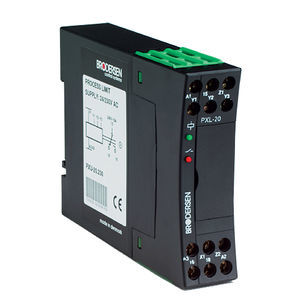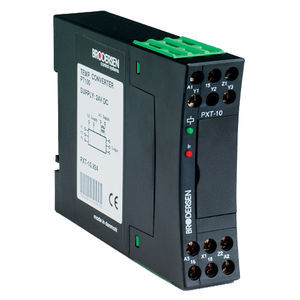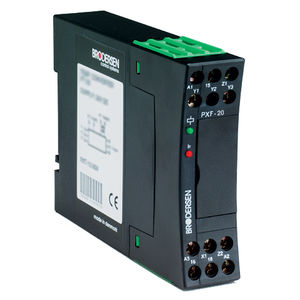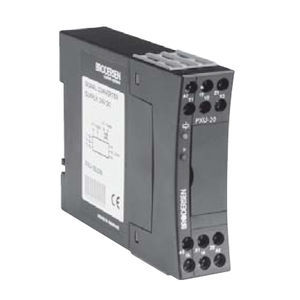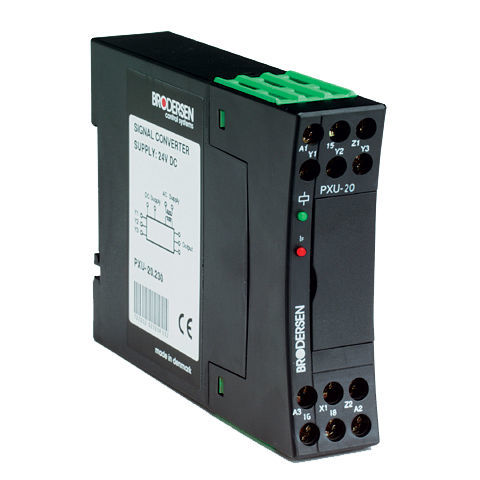
- Metrology - Laboratory
- Inspection and Monitoring
- Analog signal converter
- Brodersen Controls
Galvanically-isolated signal converter PXU-20analogisolatorDIN rail
Add to favorites
Compare this product
Characteristics
- Signal type
- analog
- Associated function
- isolator
- Other characteristics
- DIN rail, galvanically-isolated
Description
Conversion of process signal is applied where:
• the detector output differ from the input e.g. PLC - called signal interfacing.
• By transfer of signals with long wires, where the input resistor on the steering unit, is too large to treat the process signals itself. The PXU-20 has an input resistor by current input of 100ohm called signal amplifying.
Galvanic isolation is applied:
• where one wishes to avoid errors because of differences in the voltage potential for collecting measuring values. The potential differences arise because of the differences in the resistor in the earth, which is our absolute references. This often requires a galvanic isolation of all measuring signals and all signals from the control unit e.g. the PLC.
• where one wishes to avoid errors because of ground loops. The ground loops arise in large connected measuring circuits and give false measuring values, when one gets a summary of small changes in the voltage potential.
• in industrial environments, where there is a risk for interference from capacitive and inductive noise signals on the measuring signal. A consequence of this, is often burned analogue inputs etc.. 4kV galvanic isolation provides an efficient protection of the analogue input.
Catalogs
Signal Converters & Isolators
19 Pages
*Prices are pre-tax. They exclude delivery charges and customs duties and do not include additional charges for installation or activation options. Prices are indicative only and may vary by country, with changes to the cost of raw materials and exchange rates.




